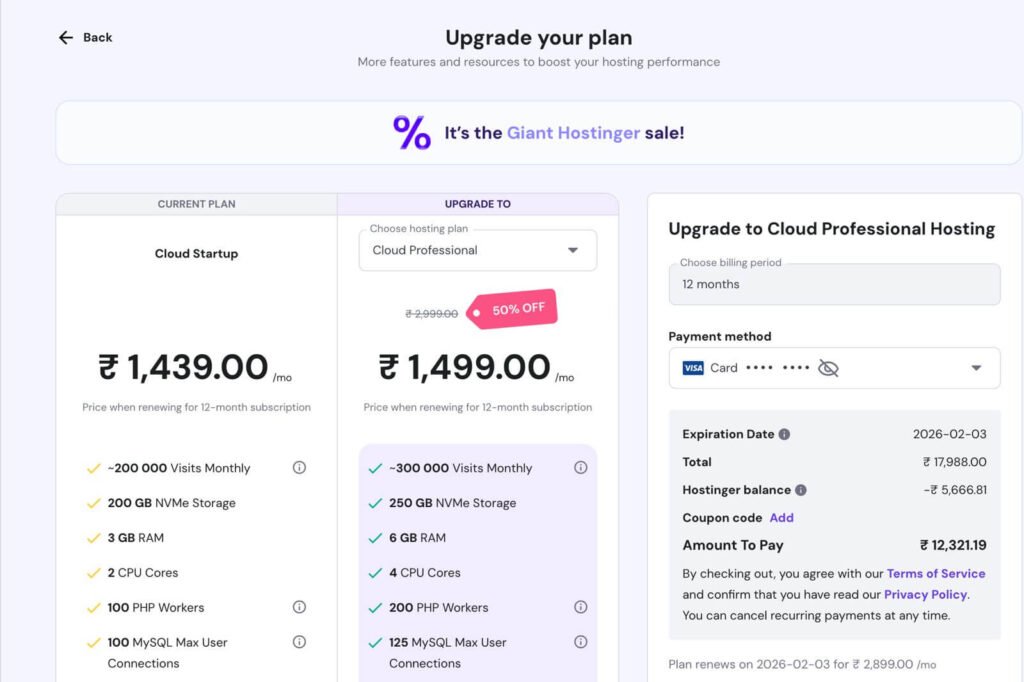Not All High Traffic Events Are the Same
Expected High Traffic – You See It Coming

- Black Friday sales
- A new product launch
- Running a big ad campaign
👉 Example: If an online store is gearing up for a holiday sale, they increase server capacity and test their checkout process ahead of time. That way, when thousands of customers show up, everything runs smoothly.
Sudden High Traffic – It Comes Out of Nowhere

- A blog post goes viral
- A major influencer shares your website
- Your product gets covered by a big news site
👉 Example: A small business website gets featured on a major news site, and within minutes, thousands of visitors start clicking through. If the hosting plan isn’t strong enough, the site could go offline before the owner even realizes what’s happening.
How Much Traffic Can Your Website Handle?
Step 1: Check Your Current Traffic Data

- Use Google Analytics – Check how many daily visitors your site gets and identify peak traffic hours.
- Look at historical spikes – Have you had sudden traffic increases before? How did your site perform?
- Monitor bounce rates and page speed – If visitors leave because your site loads slowly, that’s a red flag before a surge even happens.
👉 Example: If your site normally gets 500 visitors a day but struggles when it jumps to 1,500 during a promo, you already know it won’t survive a surge of 10,000+ visitors.
Step 2: Test Your Website’s Traffic Limits

- Check your hosting plan – Look at your bandwidth and CPU limits. If you're on a basic shared hosting plan, it won’t handle heavy traffic without slowing down or crashing.
- Run a load test – Use tools like Loader.io, k6, or GTmetrix to simulate high traffic and see at what point your site starts lagging.
- Monitor server usage – Most hosting providers have a dashboard where you can check how much CPU and RAM your site is using. If your site struggles under normal traffic, it’s time for an upgrade.
👉 Example: If your website slows down when just 100 visitors are online, imagine what happens when 5,000 people show up at once. That’s why testing before a traffic spike is so important.
What’s Next?
How to Prepare Your WordPress Site for High Traffic
1. Upgrade Your Hosting Plan

- Ditch shared hosting – If you’re on a basic shared hosting plan, it’s time to upgrade. VPS, cloud hosting, or managed WordPress hosting are much better for handling spikes.
- Enable auto-scaling – Some cloud hosting providers automatically adjust resources based on your traffic.
- Talk to your hosting provider – Let them know about expected traffic increases so they can help prevent slowdowns.
👉 Example: If a brand is launching a new product on Shark Tank, they should move to cloud hosting so their site doesn’t crash when thousands of visitors arrive at once.
2. Use a Content Delivery Network (CDN)

- Use a CDN like Cloudflare or BunnyCDN to store images, scripts, and files across multiple locations.
- Enable caching so returning visitors don’t have to reload everything.
👉 Example: If a blog post suddenly gets 50,000 views overnight, a CDN keeps the site fast for every visitor without overloading the main server.
3. Optimize Website Speed

How to Speed Things Up:
- Use a caching plugin like WP Rocket or W3 Total Cache to help pages load faster.
- Compress images with Smush or ShortPixel so they don’t slow down your site.
- Cut down on extra scripts—too many ads or tracking codes can make your site sluggish.
🚀 Don’t let slow speeds ruin a big traffic moment. Our Website Speed Optimization Service helps make your site faster, smoother, and ready to handle high traffic without breaking a sweat. Let’s get your site running at top speed!
4. Reduce Unnecessary Plugins and Scripts

- Remove unused plugins – Keep only the essential ones.
- Use lightweight themes – Some themes come with bloated scripts that slow your site.
- Optimize your database with WP-Optimize to remove junk files.
👉 Example: A website with too many plugins will crash faster than a streamlined, well-optimized site.
5. Backup and Security Measures

How to Protect Your Site:
- Set up automatic backups with UpdraftPlus or Jetpack Backup so you can restore your site quickly if anything goes wrong.
- Use a Web Application Firewall (WAF) like Cloudflare or Sucuri to filter out harmful traffic.
- Limit login attempts to stop hackers from using brute-force attacks to break into your site.
🛡️ Don’t wait for an attack to happen. Our WordPress Security Service helps protect your site from hackers, bots, and security threats—so you can focus on growing your business without worrying about downtime or data loss. Let’s secure your site today!
Final Thoughts
Not sure if your site is ready? WPService Hub can help. We specialize in WordPress speed optimization, hosting upgrades, and security solutions to keep your site running smoothly—even when traffic surges unexpectedly.
Let’s get your website ready for its big moment. Get in touch today!


